Traditional Christian churches typically have a rectangular floor plan and are made up of a nave – the central part of the church – and an apse – the semicircular or polygonal area at the end of the aisle, usually located behind the altar. Disrupting this typology, churches with a circular shape possess a unique character, their shape standing as a religious symbol of heaven and eternity.
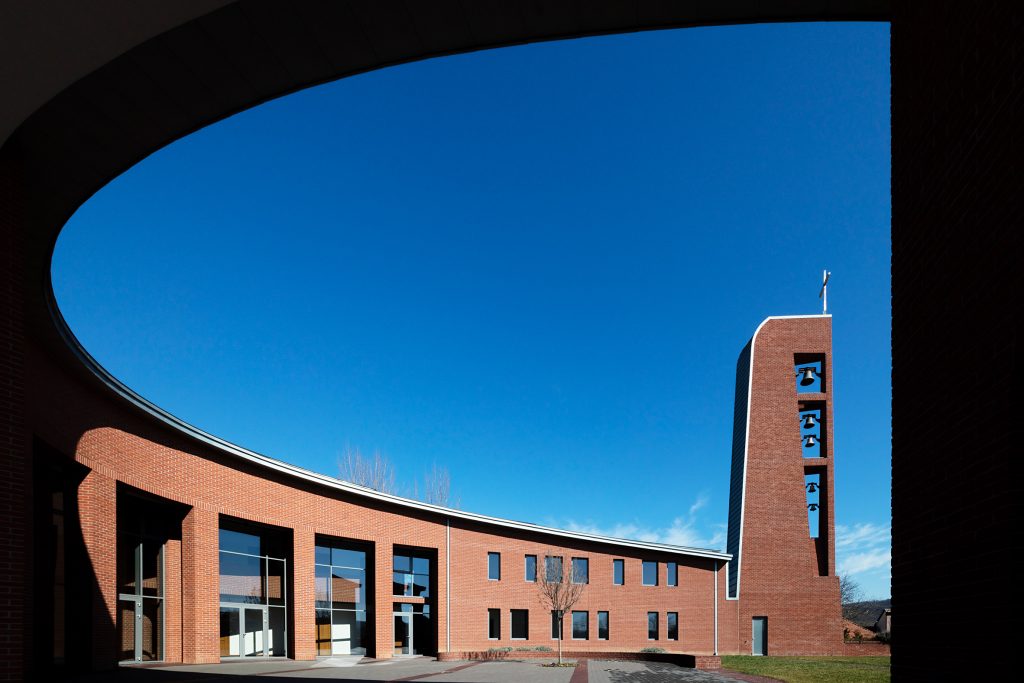
Between the 11th and 14th centuries, the practice of building places of worship with a round shape was championed by veterans of the Crusades, the shape standing as a symbol of heaven and eternity. But if back in the Middle Ages this was done to increase the defense potential of the buildings or for the churches to double as astronomic observatories, today architects choose the circular shape for religious centres to create a place of contemplation away from the bustle of modern life.
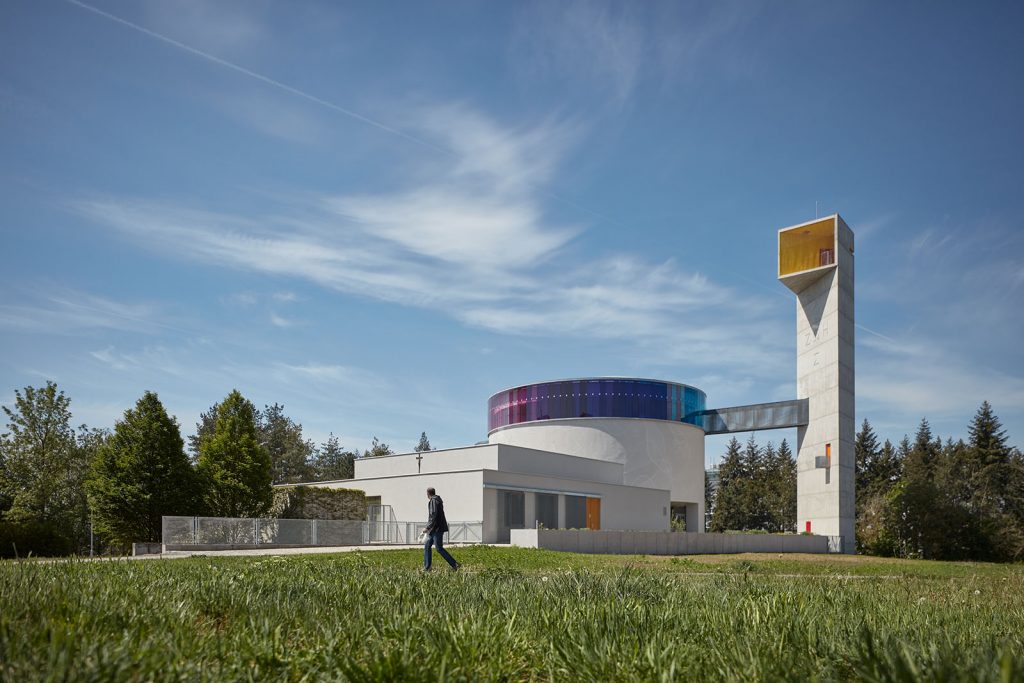
Church of Beatified Restituta in Brno by Atelier Štěpán
The round church designed by Atelier Štěpán, architecture studio from Czech Republic, is characterized by a panoramic rainbow-coloured window. Dedicated to nurse Maria Restituta Kafka, the Church of Beatified Restituta is located in a housing estate in Brno.
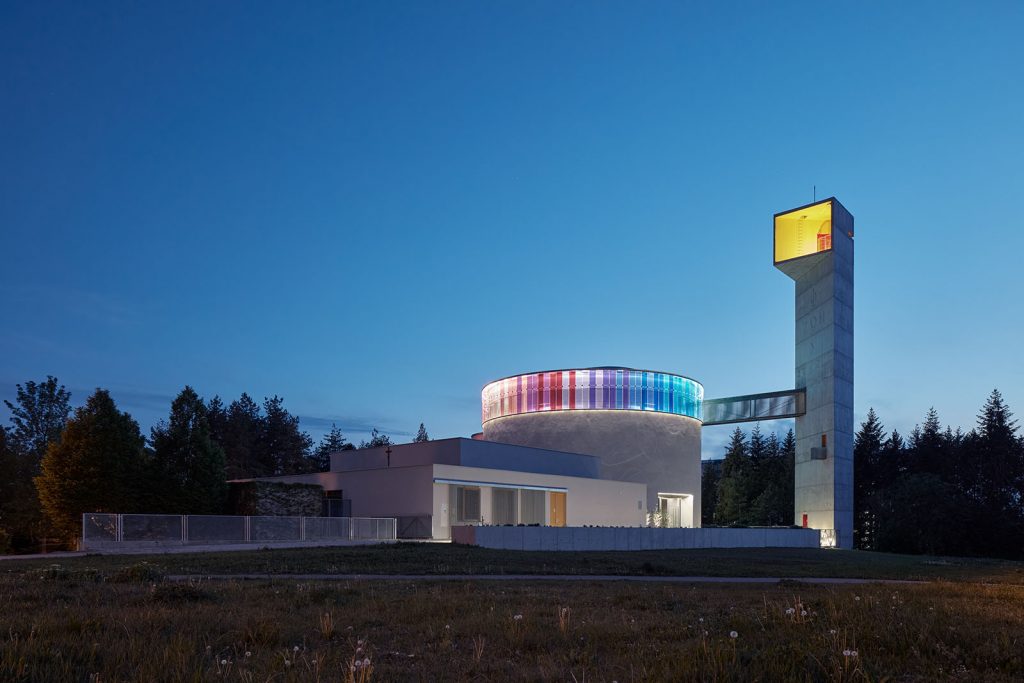
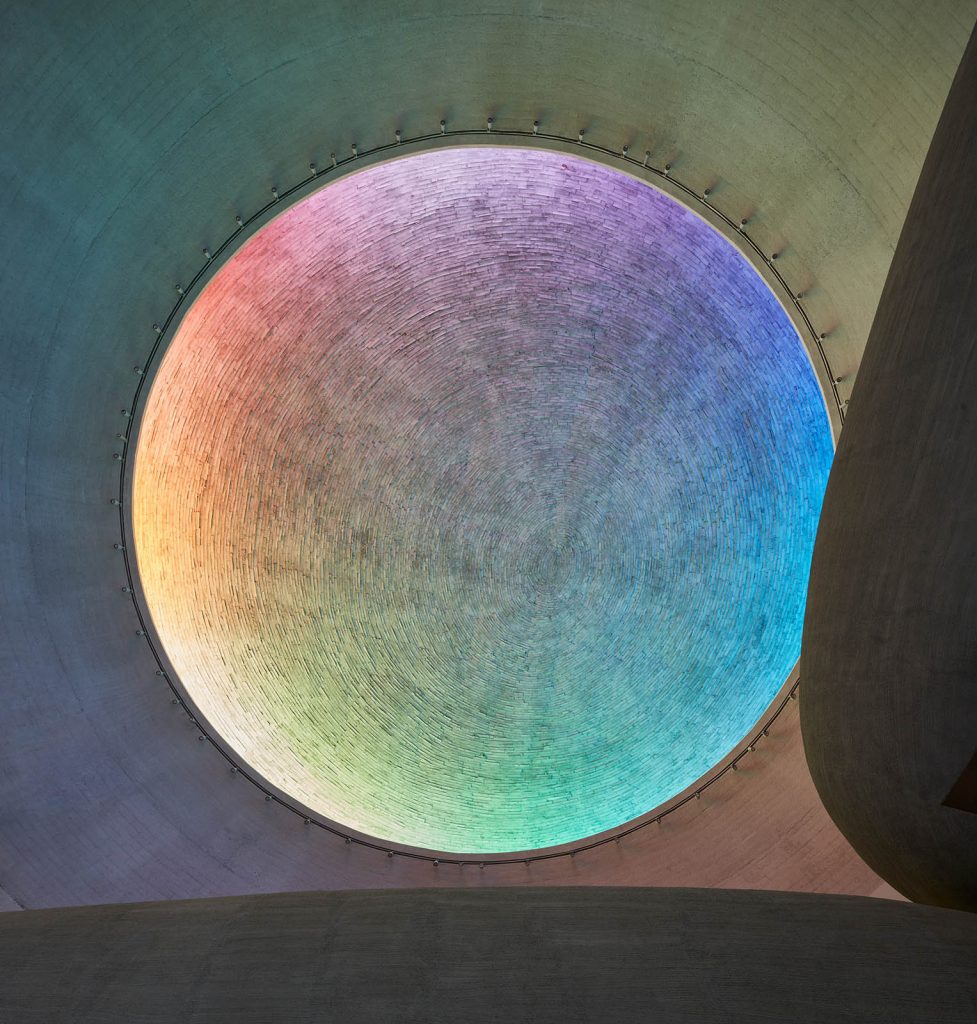
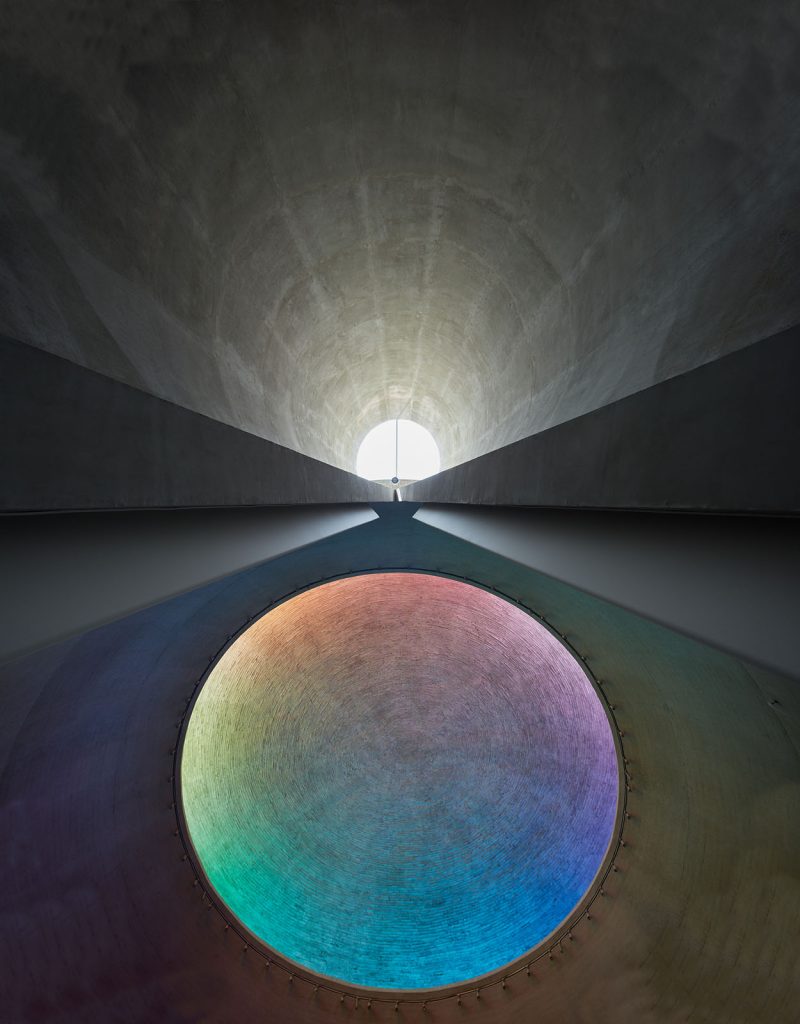
Church of Beatified Restituta in Brno by Atelier Štěpán
The ring of stained-glass windows topping the church is the only decoration of otherwise bare concrete structure. Light coming through the rainbow-hued glass illuminates the concrete dome above it with various patterns depending on the time of day.
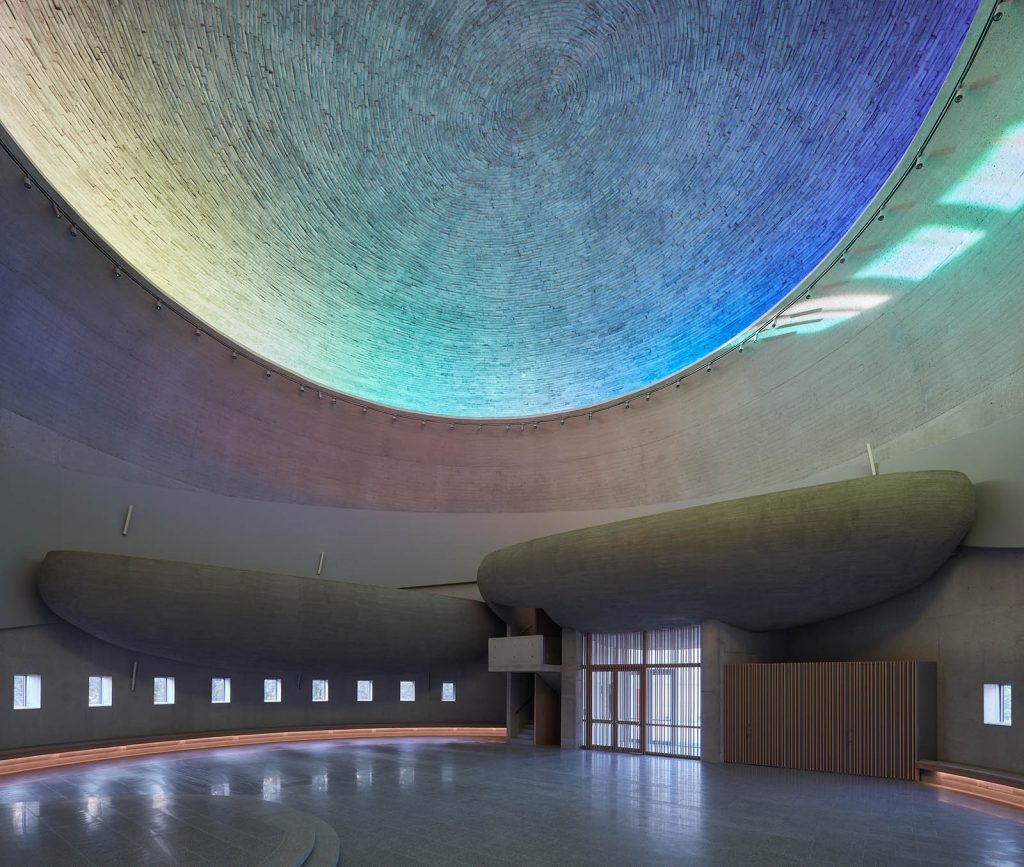
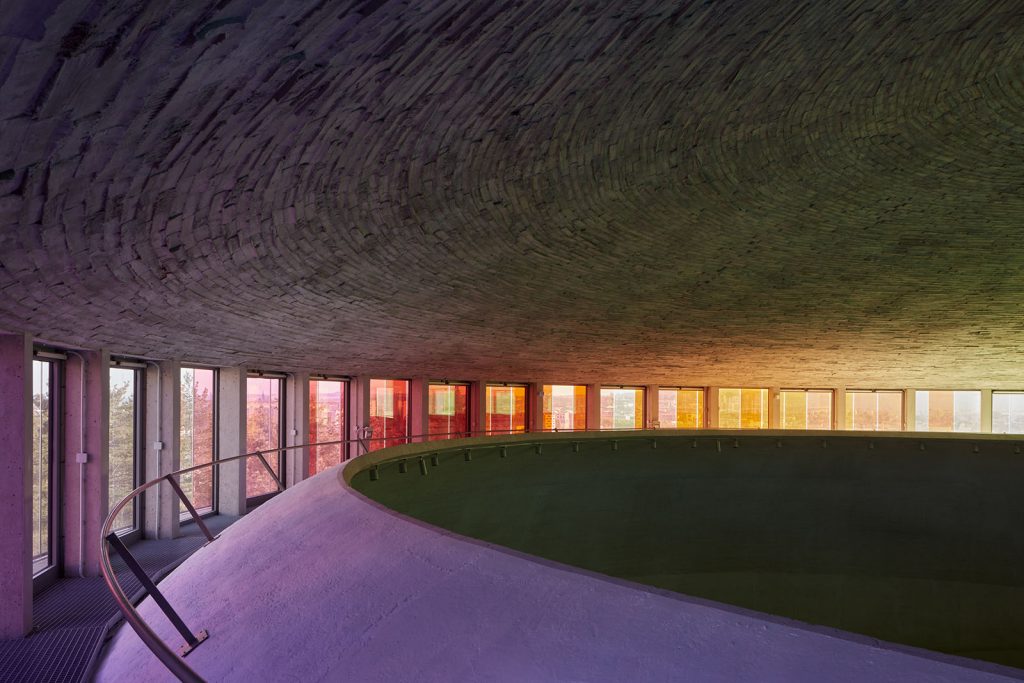
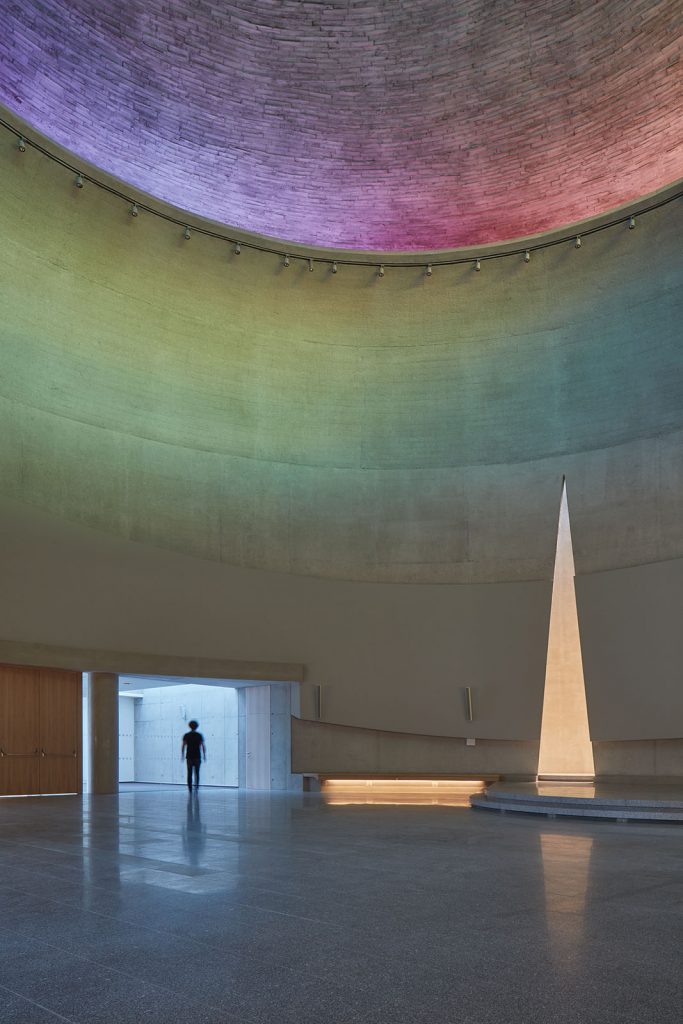
Church of Beatified Restituta in Brno by Atelier Štěpán
As the windows are hidden behind a wide ledge, the source of the light is veiled from the visitors of the church. This, according to the architect, represents the existence of the world beyond our physical experience and the existence of God on both conscious and unconscious levels.
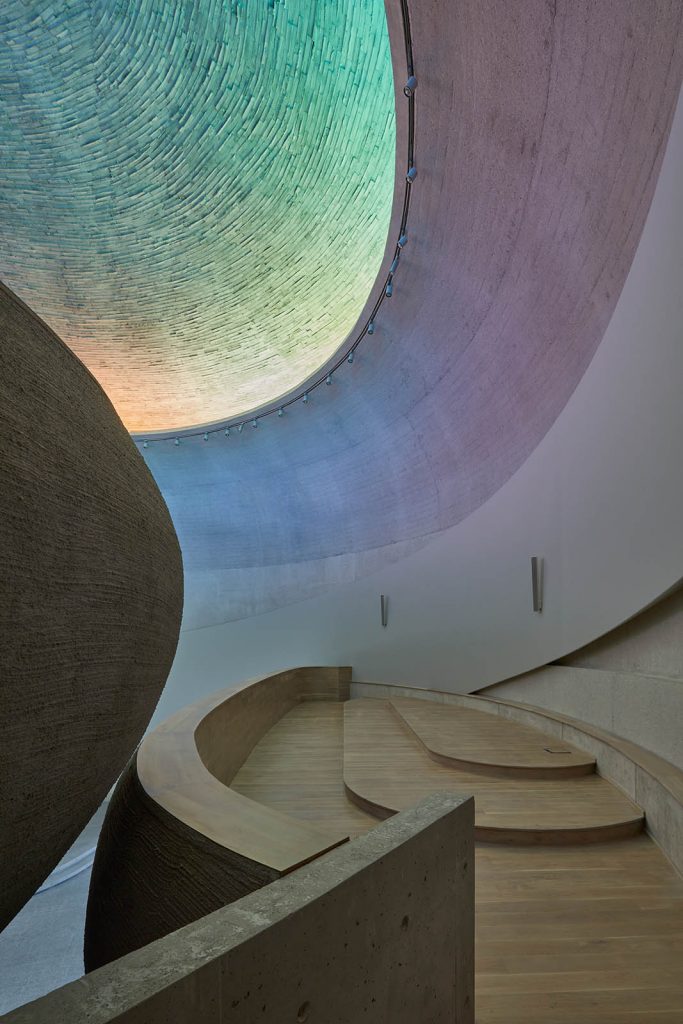
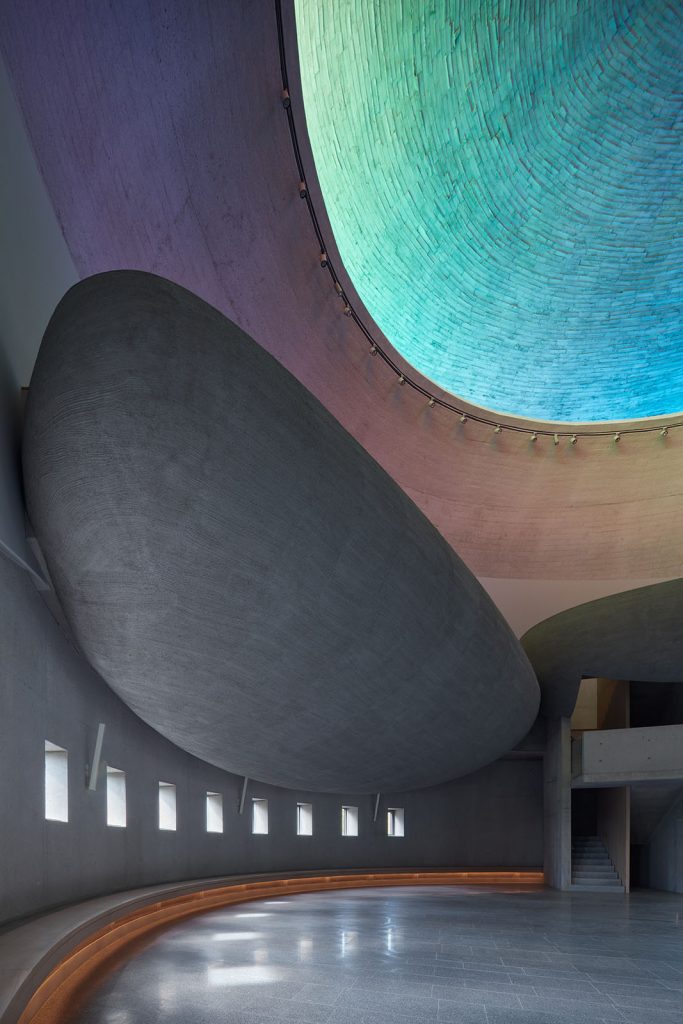
Church of Beatified Restituta in Brno by Atelier Štěpán
The architect has deliberately left the interior of the church minimalist and undecorated, so that the church could serve as a space for contemplation – a space stripped of superfluous visual sensations amidst the world full of easily accessible information. The main auditorium is only broken up by a small stage with a triangular-shaped door leading into the sacristy and a series of small square windows, while two balconies on the first floor provide additional seating.
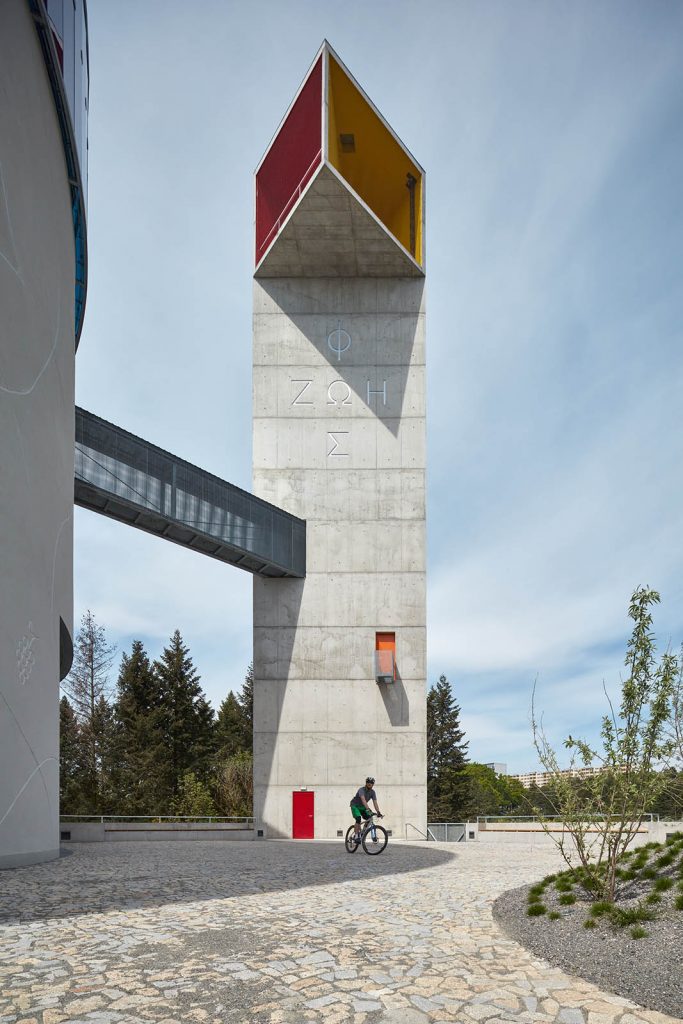
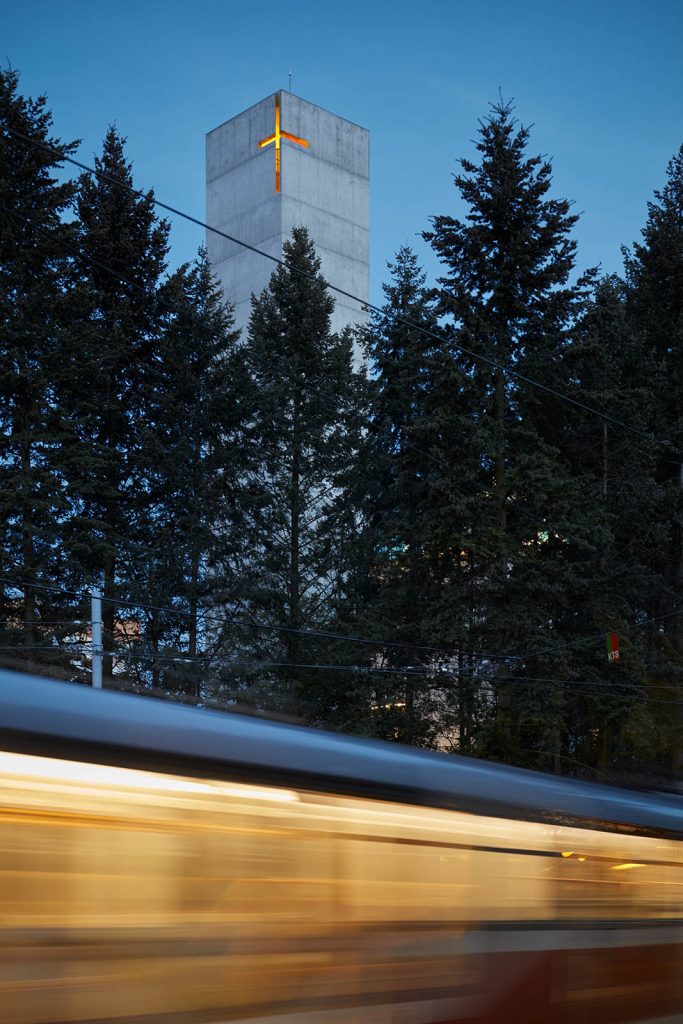
Church of Beatified Restituta in Brno by Atelier Štěpán
Next to the church, there is a concrete triangular bell tower that doubles as a viewpoint across the city. The tower is connected with the main body of the church by a bridge leading to a gallery above above the main auditorium alongside the stained-glass windows.
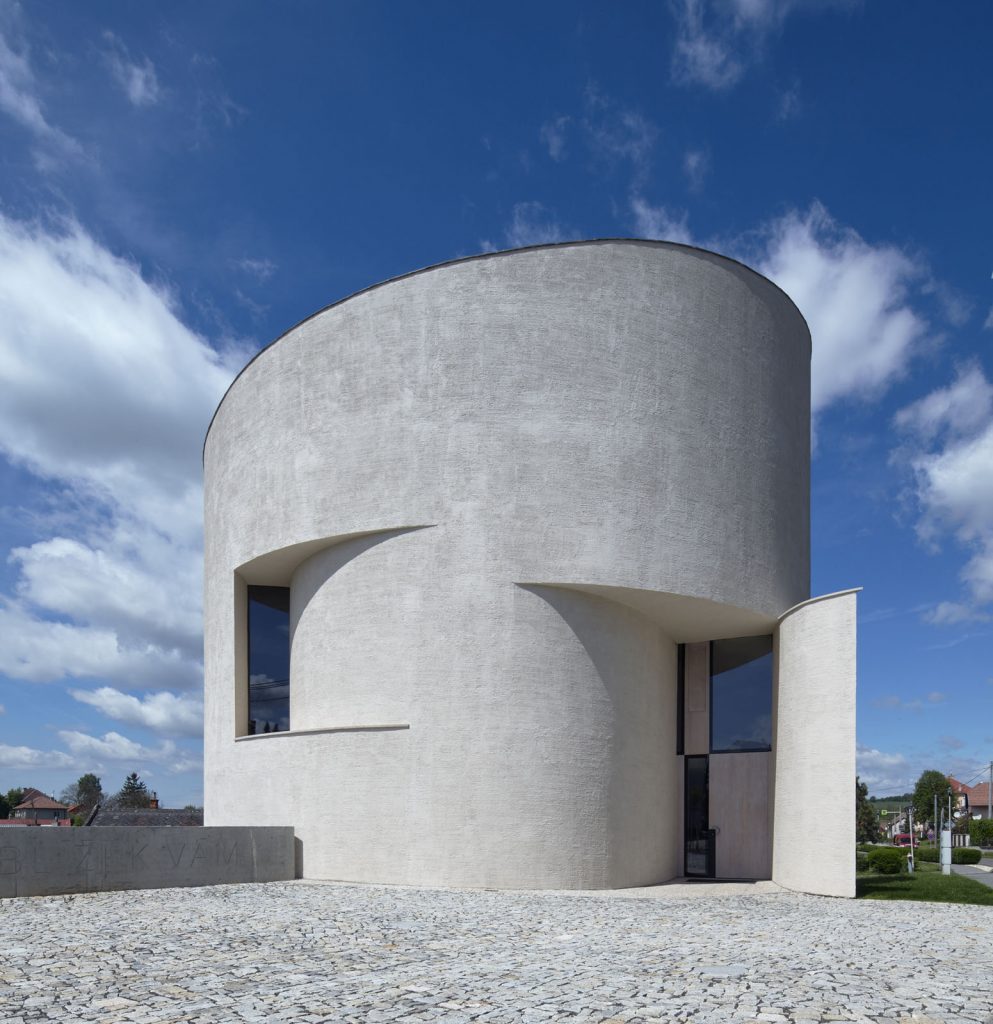
Church of St Wenceslas in Sazovice by Atelier Štěpán
The Church of Beatified Restituta in Brno is not the only church of a circular shape completed by Atelier Štěpán. The design of the Church of St Wenceslas for Sazovice, a village in the Zlín Region of Czech Republic, is based on the circular Romanesque churches built in the 10th century, often called rotundas. The cylindrical building is made of reinforced concrete coated in pale plaster, imprinted with linear brush marks. Light and abstract, it seems to be very light, evoking more a ring of paper than brick.
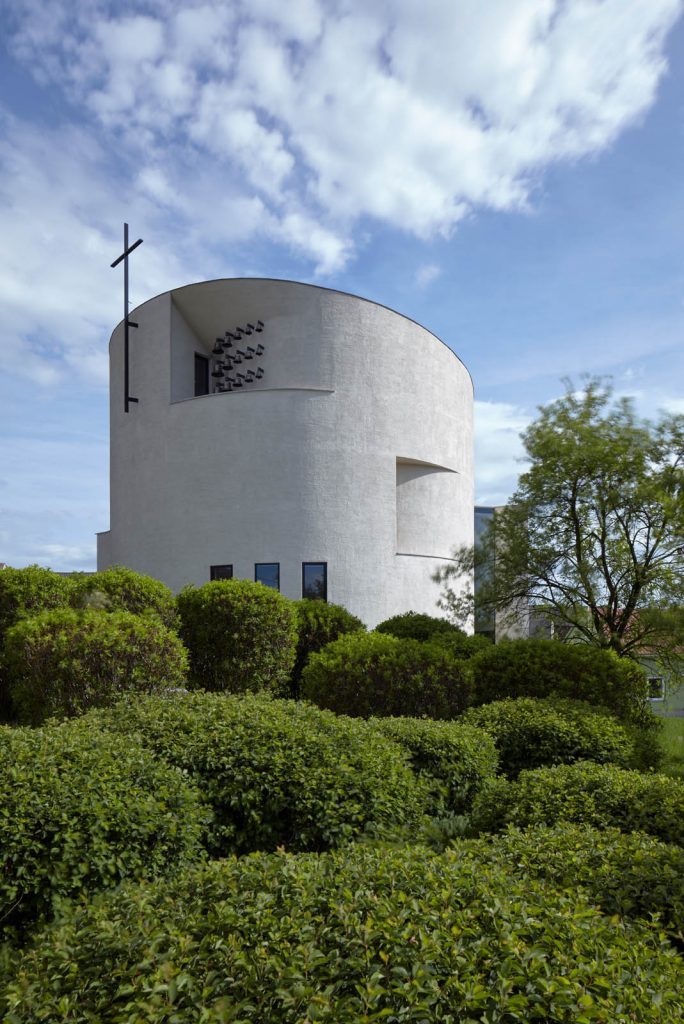
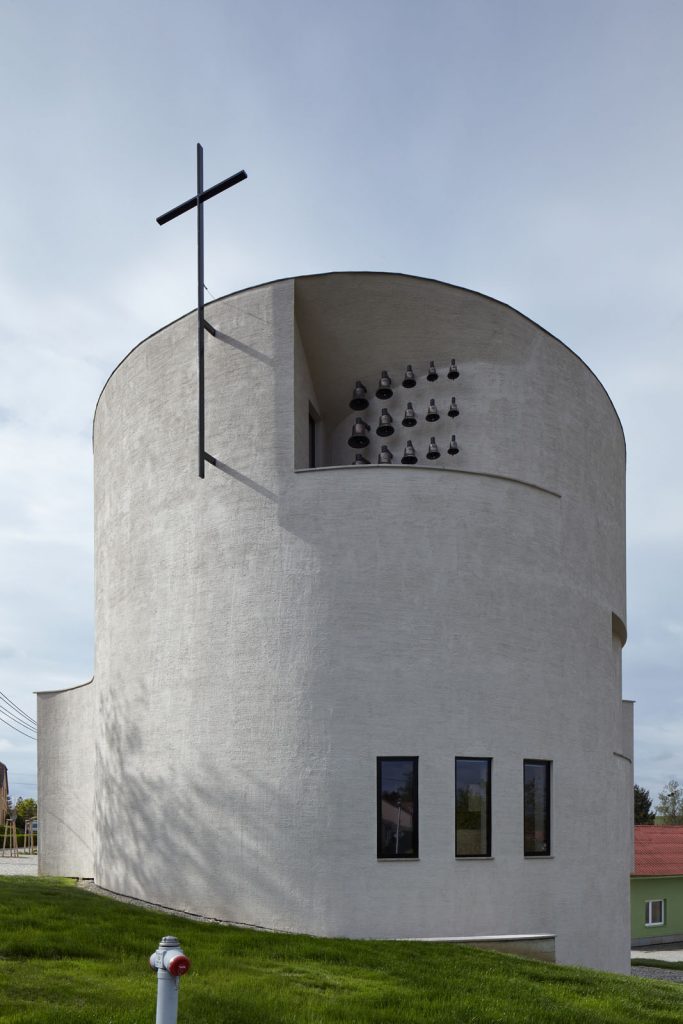
Church of St Wenceslas in Sazovice by Atelier Štěpán
Visitors don’t perceive the thickness of the walls, because they taper from half meter to centimeter, with windows appearing to have been carved out of them. The light coming through the cuts illuminate the space gliding along the walls and shaping the form. At the top of the building there is an opening, which provides an alcove for a grid of church bells.
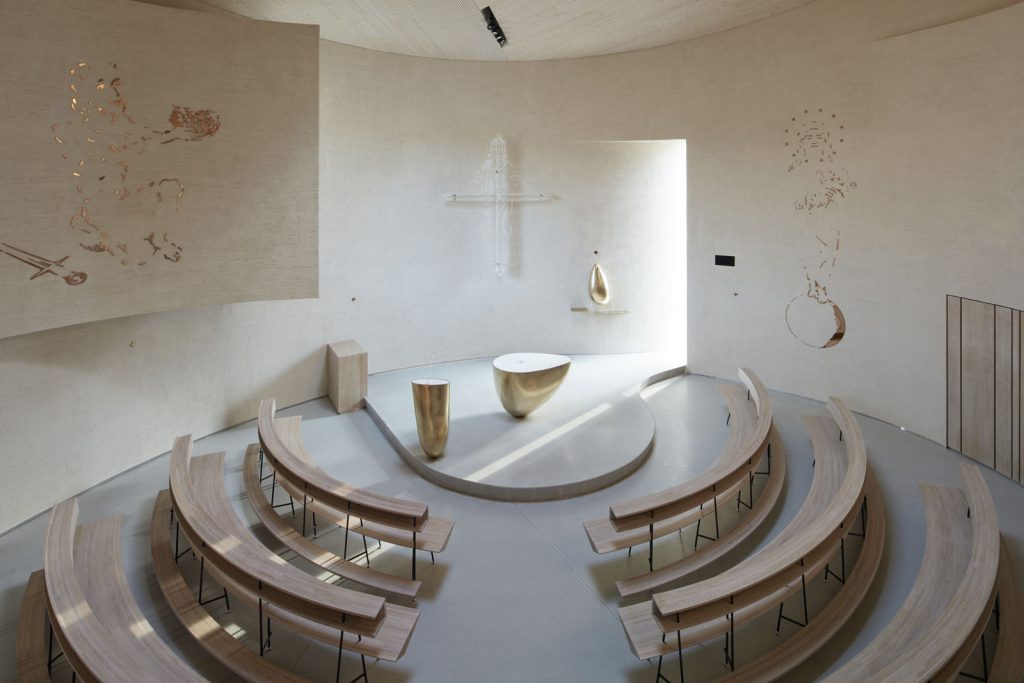
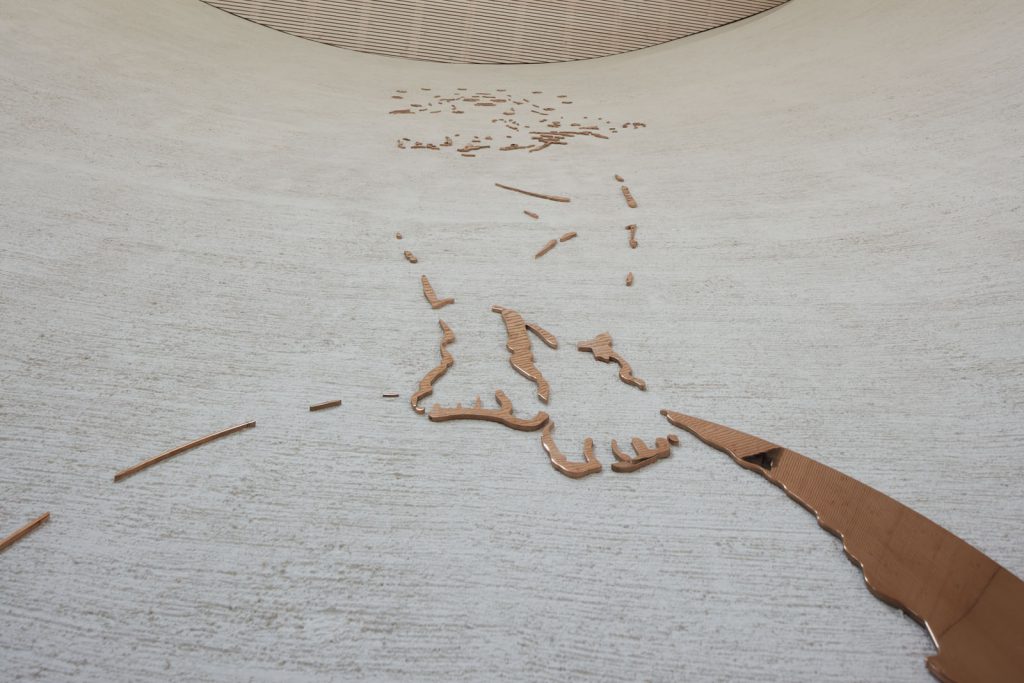
Church of St Wenceslas in Sazovice by Atelier Štěpán
One of the walls curls open to reveal the tall main entrance, which leads into the three-storey-high worship space. Just like in the Brno church, the interior is simple and clean to bring a sense of quietness and peace. The architect describes it as “a space without personal identification visual smog – a simple, focused, and pure recollection.”
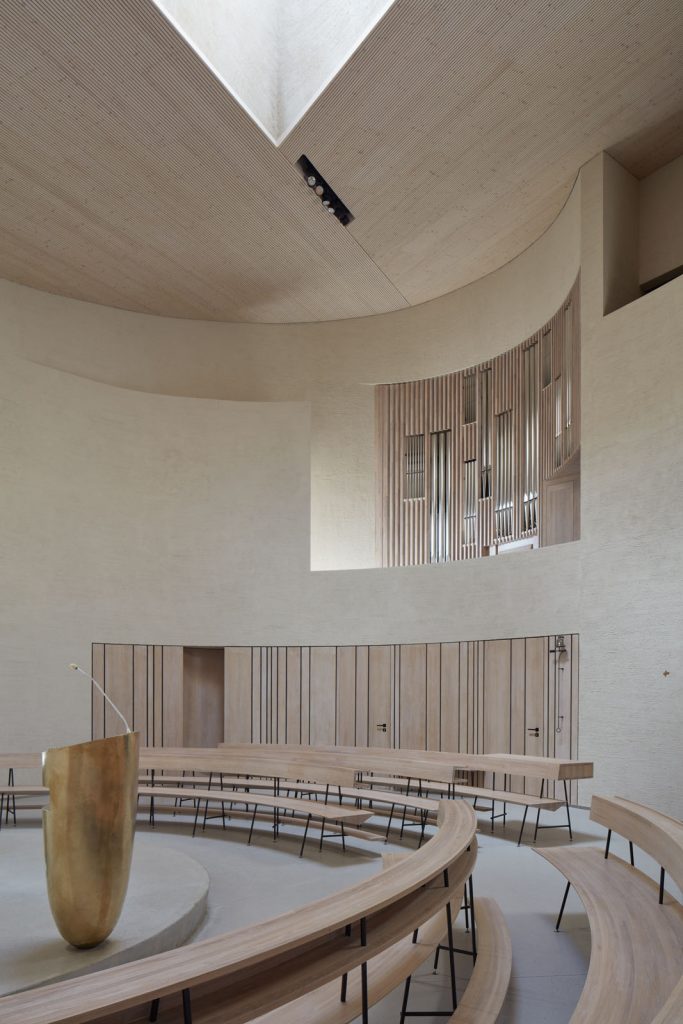
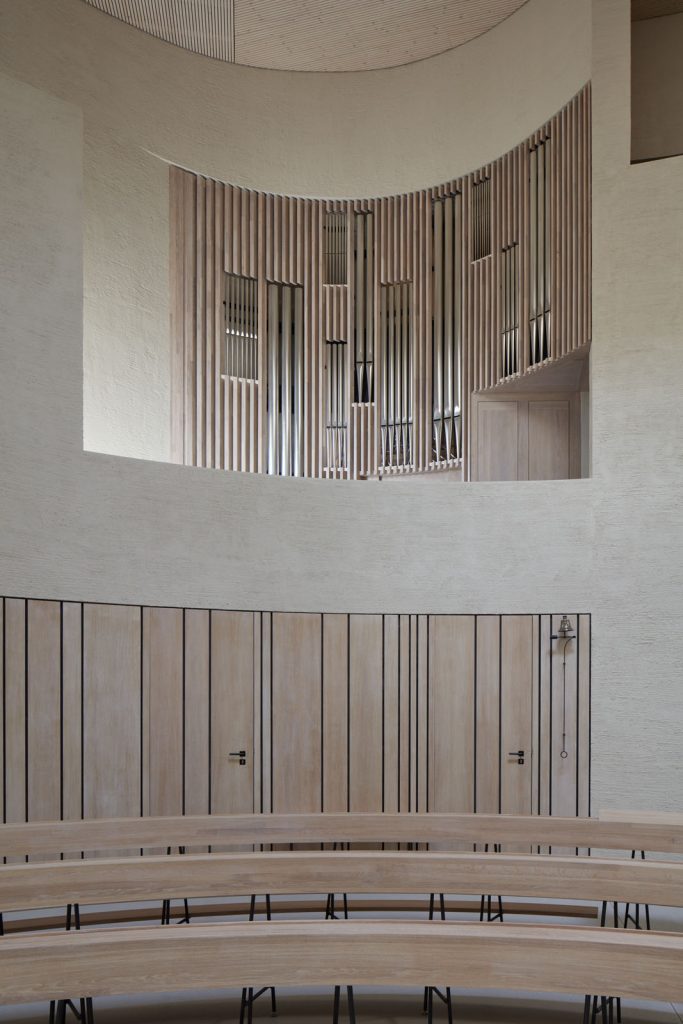
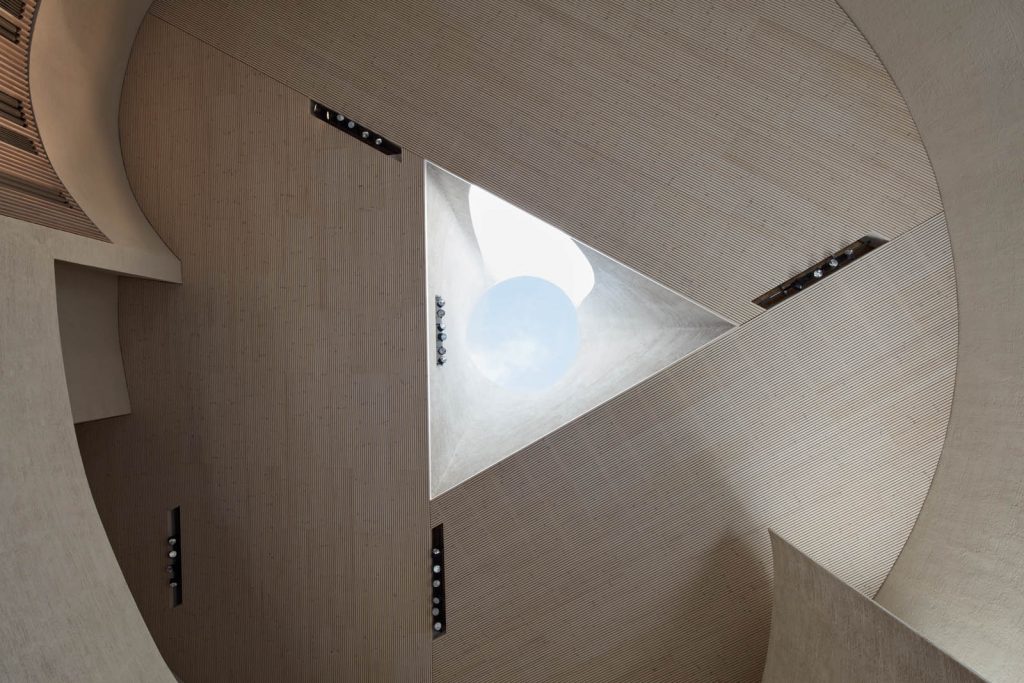
Church of St Wenceslas in Sazovice by Atelier Štěpán
The church is topped with a sloped lattice wood roof punctured by a triangular skylight positioned above the platform hosting the altar and pulpit. Around the altar, curved wooden pews are arranged in semi-circles. The building’s upper level facing over the altar is accessed via a concrete spiral staircase.
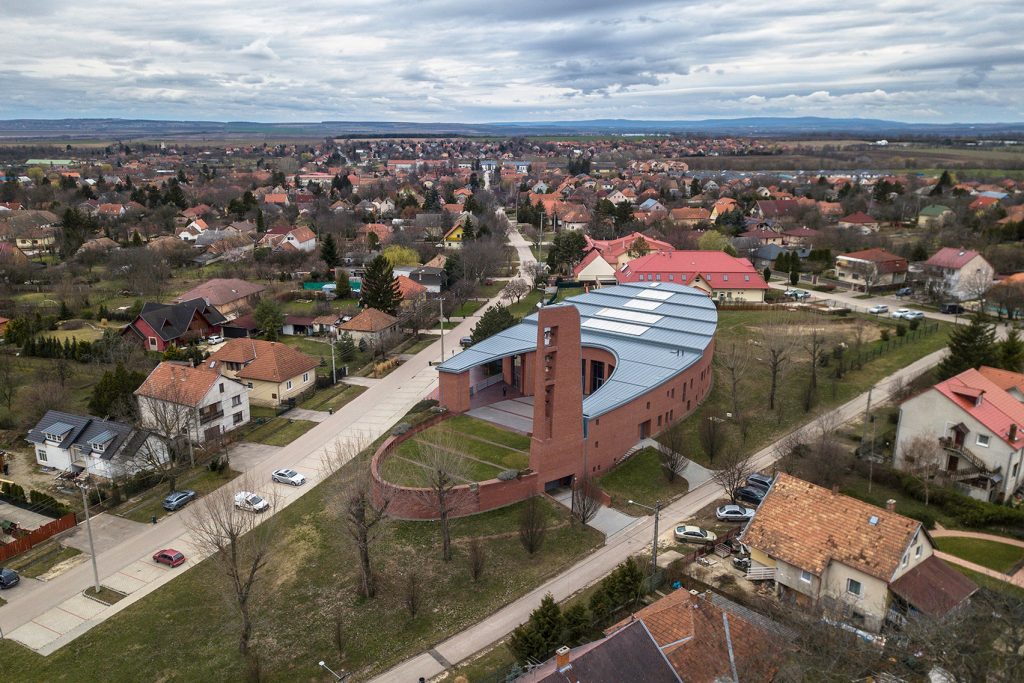
Church of Pope John Paul II in Páty by Robert Gutowski Architects (also header image)
The Church of Pope John Paul II in the village of Páty, Hungary, designed by local practice Robert Gutowski Architects has not a circular but an elliptical layout, but we still include it in the list for the architect claims, just like with the round churches, the form of an oval has been chosen here to symbolise “perpetuity” and to create a holistic space.
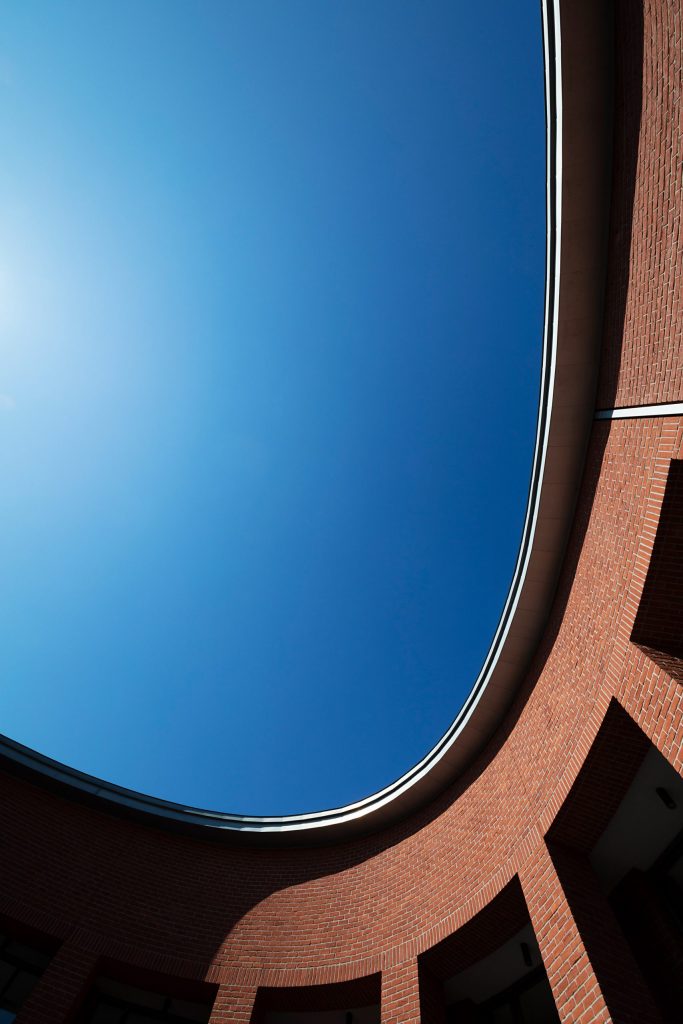
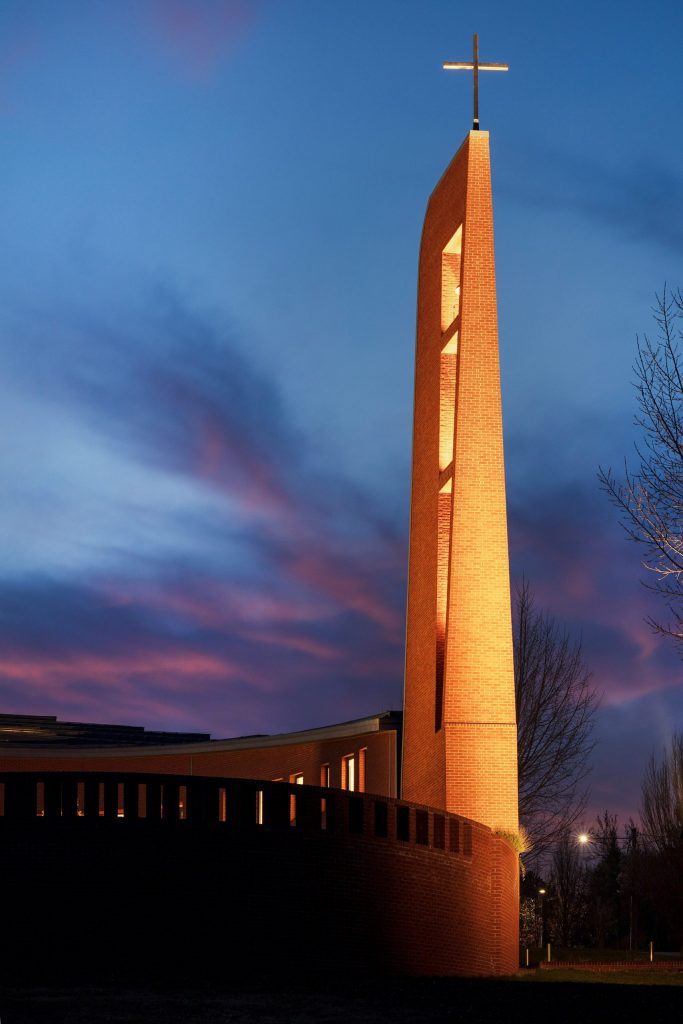
Church of Pope John Paul II in Páty by Robert Gutowski Architects
Conceived with the intention to shift the emphasis toward the active involvement of worshippers, the crescent-shaped building wraps around an adjoining oval outdoor space. According to the architect, the church represents a conscious response to liturgical changes in recent decades: while the Creator and the almighty God are at the centre of traditional liturgy, modern liturgical efforts have shifted emphasis to the recreator God, the image of a perpetually redeeming Christ. With his experiment in contemporary church architecture, Gutowski invites the congregation to “actively experiences the holy act.”
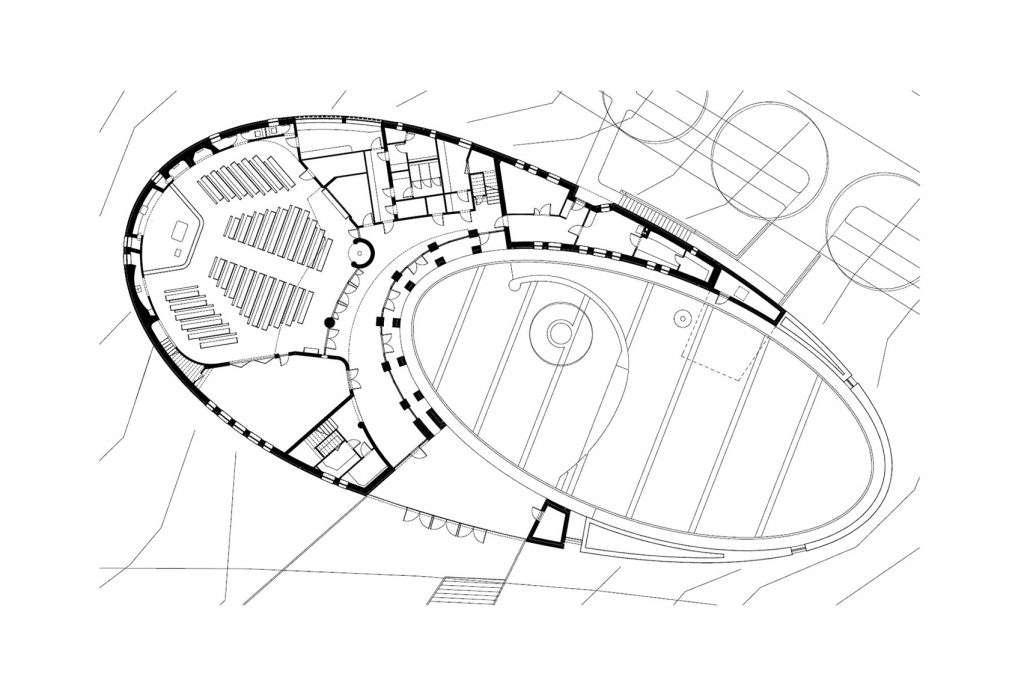
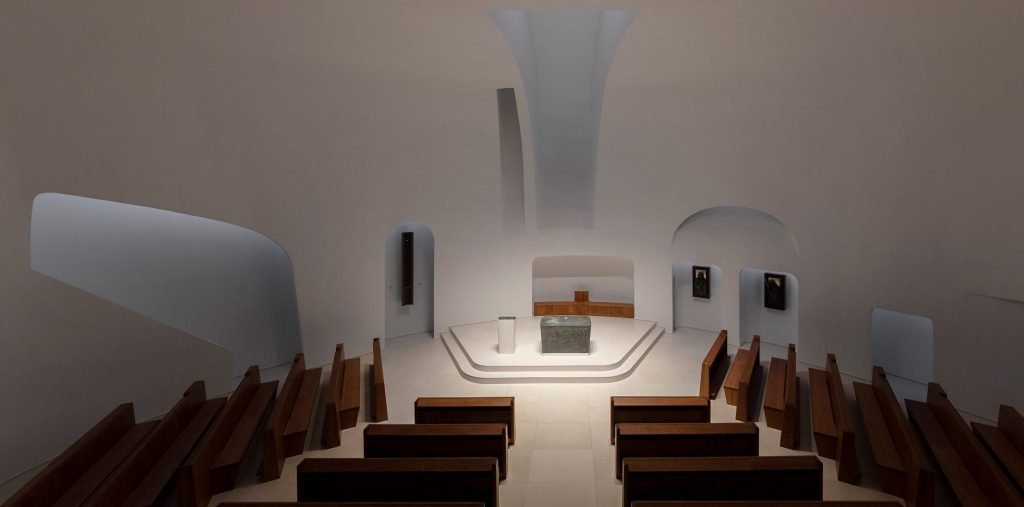
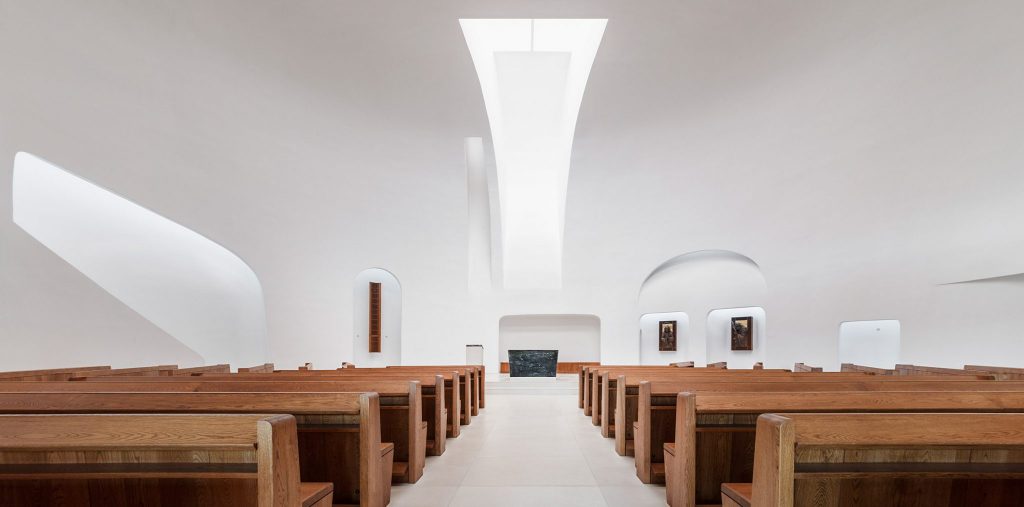
Church of Pope John Paul II in Páty by Robert Gutowski Architects
The two ellipses formed by the crescent-shaped church and the adjoining yard have been set at different axes, following the historically “inaccurate” layout of traditional churches, where the nave and the apse tend to be slightly off-centre of each other, which is considered to be a symbol of the broken body of Christ. Although the structure itself is symmetrical, no detail of the interior, such as alcoves, is. The altar is the only element that sits on the main axis of the building.
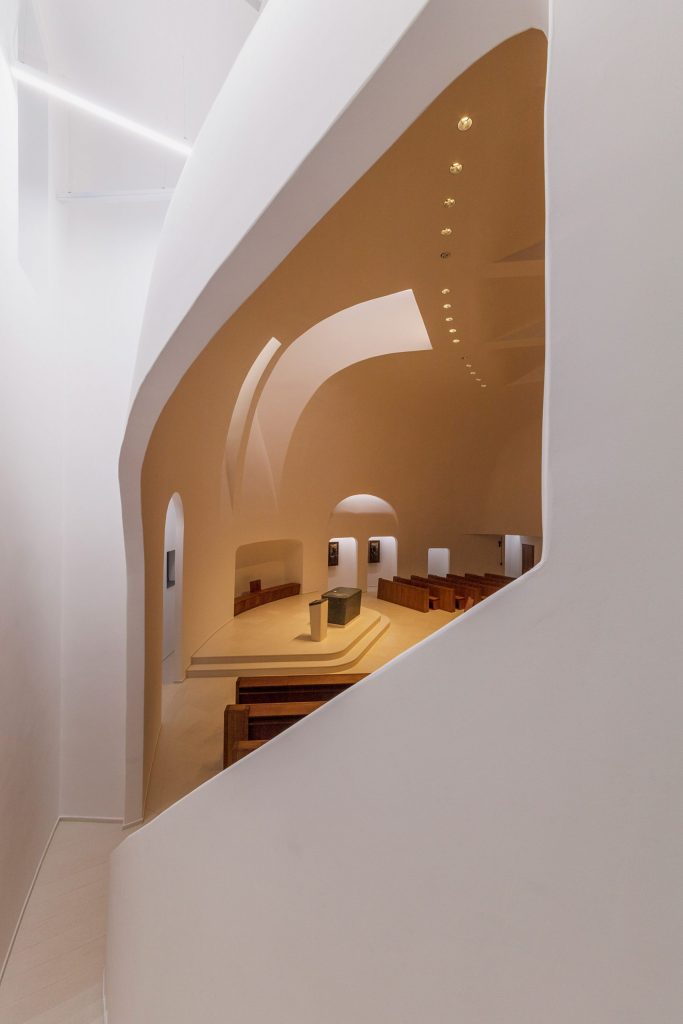
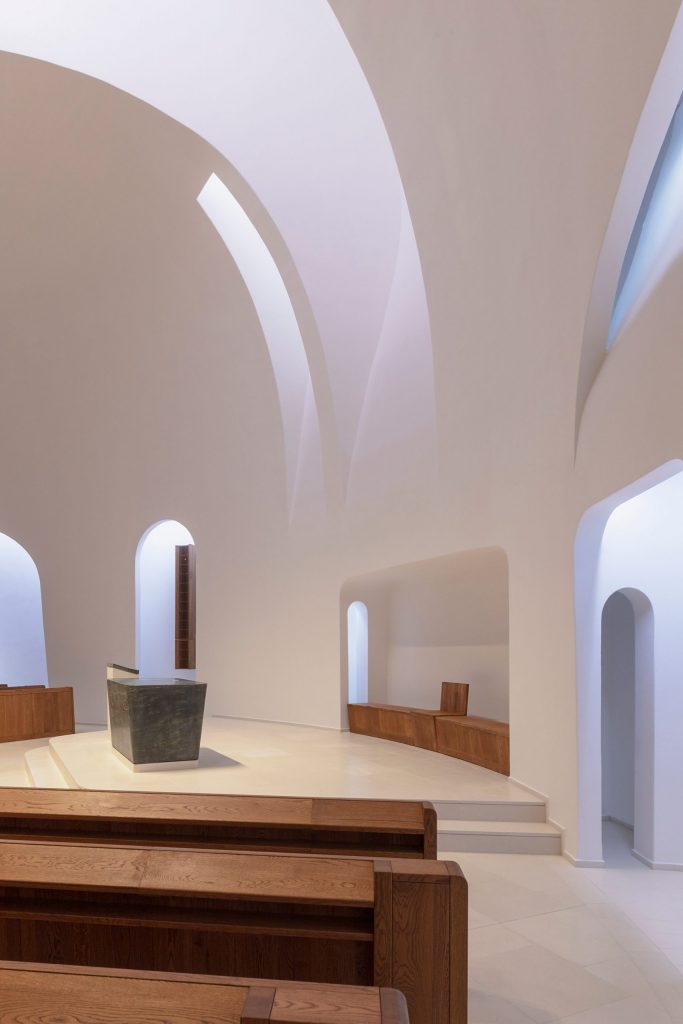
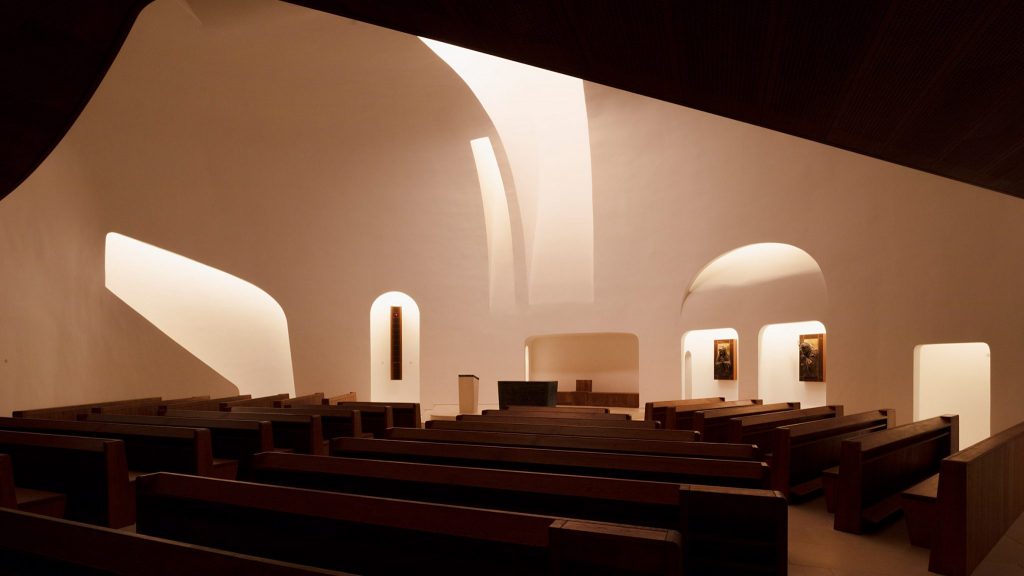
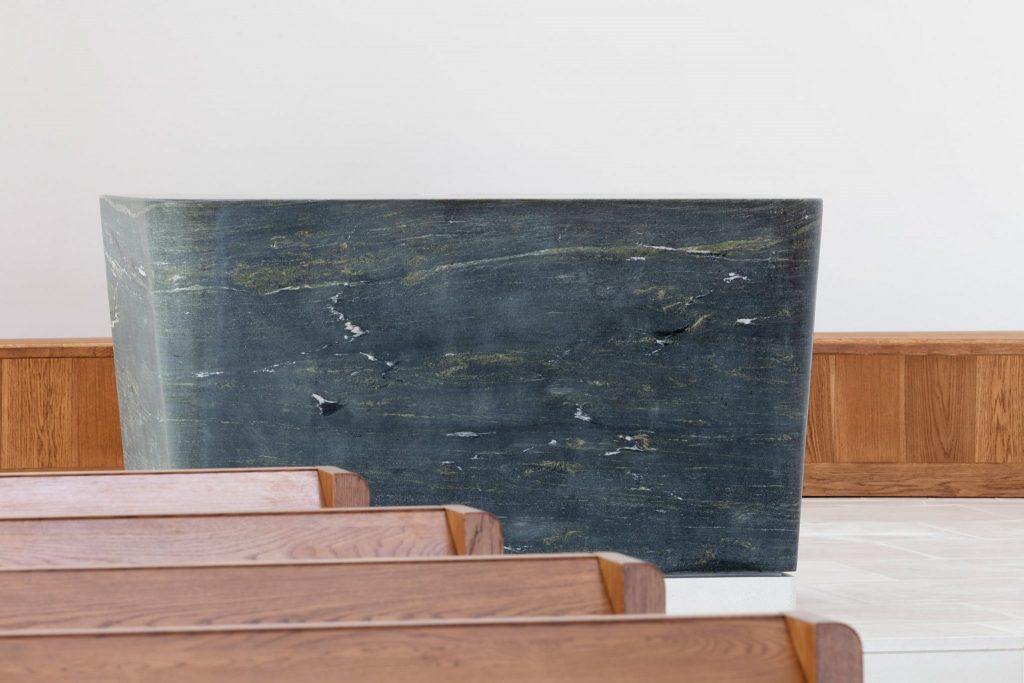
Church of Pope John Paul II in Páty by Robert Gutowski Architects
The majority of the interior has been painted white, with natural wood pews and the altar of deep green onyx stone being the only intervention. The domed ceiling contains a rectangular cutout that fills the auditorium with natural light, directed towards the altar as the church’s focal point.